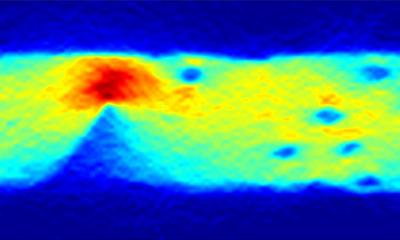Researchers at the University of Melbourne succeeded in imaging how electrons move in 2D graphene, an achievement which may boost the development of next-generation electronics. The new technique overcomes usual limitations of existing methods for understanding electric currents in devices based on ultra-thin materials, and so it is capable of imaging the behavior of moving electrons in structures only one atom in thickness.

The team used a special quantum probe based on an atomic-sized 'color center' found only in diamonds to image the flow of electric currents in graphene. The technique could be used to understand electron behavior in a variety of new technologies.
"The ability to see how electric currents are affected by these imperfections will allow researchers to improve the reliability and performance of existing and emerging technologies. We are very excited by this result, which enables us to reveal the microscopic behavior of current in quantum computing devices, graphene and other 2D materials," the researchers said.
In addition to understanding nanoelectronics that control quantum computers, the technique could be used with 2D materials to develop next generation electronics, energy storage (batteries), flexible displays and bio-chemical sensors.
"Our technique is powerful yet relatively simple to implement, which means it could be adopted by researchers and engineers from a wide range of disciplines" said the lead author of this study. "Using the magnetic field of moving electrons is an old idea in physics, but this is a novel implementation at the microscale with 21st Century applications."
The work was a collaboration between diamond-based quantum sensing and graphene researchers. Their complementary expertise was crucial to overcoming technical issues with combining diamond and graphene. "Building a device that combined graphene with the extremely sensitive nitrogen vacancy color center in diamond was challenging, but an important advantage of our approach is that it's non-invasive and robust - we don't disrupt the current by sensing it in this way," the team said.
The team explained how it was able to use diamond to successfully image the current: "Our method is to shine a green laser on the diamond, and see red light arising from the color center's response to an electron's magnetic field". "By analyzing the intensity of the red light, we determine the magnetic field created by the electric current and are able to image it, and literally see the effect of material imperfections."